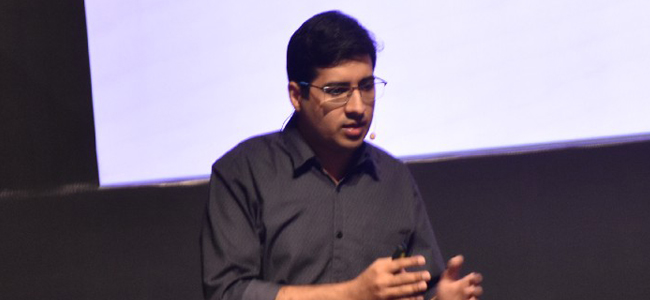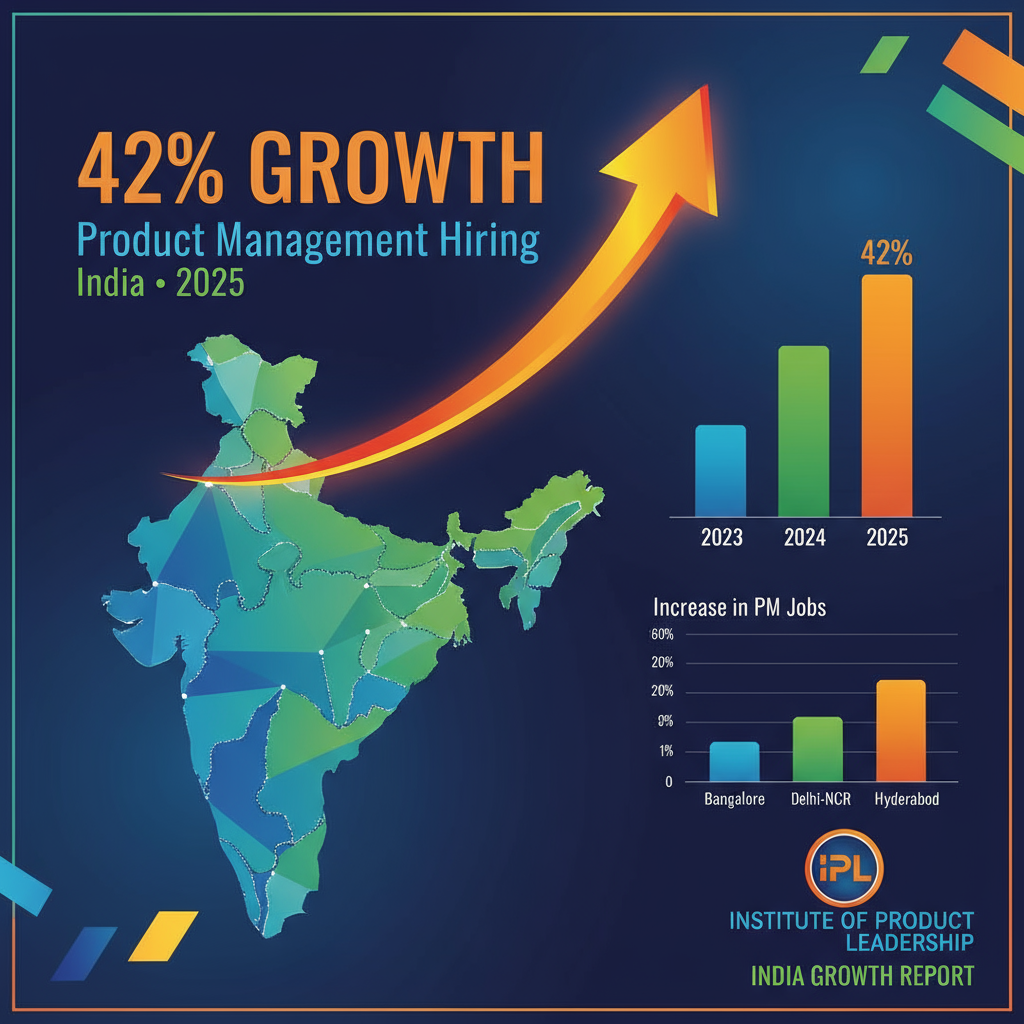Design Thinking Is A Way Of Living, A Culture...
With nearly 15 years of experience in User Experience (UX), Sameer Bhiwani brings to the table invaluable knowledge and experience to pass on. As a Principal Interaction Designer at Oracle, he and his team were responsible for several product lines of Oracle. He donned the role of an Interaction Designer in Cisco and maintained the UI Standards and Design Patterns used by several Customer and Partner facing applications published by the Cisco Services Business Unit. In HP, he was the Manager for User Experience Incubation Studio and was responsible for ensuring the studio is effective in its collaboration with marketing, portfolio and delivery teams.It is thus safe to say that “Design” is what Sameer is made for. If weaving magic in Design Thinking in his job was not enough, he also mentors Designlab on UX and coaches students of the courses offered by Designlab. His role in Blue Jeans Networks entails owning and leading UX for some of their key products and mobile apps developed at the Bengaluru facility. His passion for design is infectious as he talks about Design Thinking in this informal chat.

Q: How did the phrase “Design Thinking” originate? On the face of it, it is not very clear what exactly it means. Is Design Thinking a mindset - meaning it changes how we should think, or a prescriptive framework - meaning it tells us what to do, or a process - meaning it tells us how we should do something?
In the current context of digital products and services, the term was coined by Tim Brown. Historically however, the concepts have evolved from the 60’s and moved through many domains like industrial design, architecture, cognitive science and many more eventually resulting in IDEO and the Stanford d.school popularising the term, its study and practices that we know today.
As it gets commoditised, it will continue to evolve. It surely needs to evolve much faster to keep up with advances in devices and models of interaction like AR/VR, virtual assistants, gaming, multi-device remote collaboration, inclusion of much wider audiences and such.
Design Thinking, as you touch upon, is all of the above - it is a mindset, a framework, a process. As a mindset, it poises us to embrace ambiguity and complexity, learn by making, by iterating, having empathy towards users and having the confidence that the process will help us tackle difficult problems.
As a framework, it expresses the steps I listed in a previous answer, but if you look around, you see that different groups are free to adjust it to their needs based on their users, their context and goals.
As a process, it has methods to follow, which again, is open to tailoring as suitable as long as the mindset is retained.
Q: Are there any popular Design Thinking tools?
For Design Thinking, ‘tools’ are ‘methods’. The currently popular Design Thinking process has the following steps: Empathise, Define, Ideate, Prototype & Test.
Each step of this process has several methods which a team may pick based on the context, situation, time, and resources.
Here’s an example from Stanford d.school where they mention a few methods against each step of the process:

It is useful for a team to standardise some document templates and workflows to reuse and plan their projects accordingly so that they can make repetition smooth.

Jake Knapp created the ‘Design Sprint’ at Google Ventures. This method is intended to run the cycle in a working week and help set a direction.
This is a selection of a few methods and a rapid process to run them. It is critical to get all the key decision makers, and most importantly, the users together and get their feedback. All the methods require the team to keep an experimentation mindset and gather feedback from target users and not just debate or brainstorm among themselves or take take feedback exclusively from domain experts.
Q: What kind of design principles do you apply in your job?
My work and community engagement challenges me to constantly be creative by providing me with many problems to solve. Here are a few principles that I find myself following on a regular basis:
Iteration of processes: I keep a long-term view at solving problems, changing the culture, improving processes and overall improvement of myself, my solutions and those of others around me. This requires constant and active iteration of how I operate, I make small nudges and big changes as needed and shape our outcomes slowly but consistently.
Empathy towards users: The narrative that binds teams has to be that of providing a worthy product to our customers and their customers. The quality of decisions we take is predicated on how well we understand our end users. I make a constant effort to understand them better and share my learnings with my teams.
Shared understanding: When working across locations, teams, time zones, and functions, a common understanding of the problem, direction and solution is imperative to delivering the design intent. I make a constant effort to bring teams together, surface data points, keep my thought process evident and transparent and provide opportunities to everyone else to do the same.
Working with constraints: As the team and company grow, the usual constraints of time and resource reduce, only to give way to newer and different ones that constantly challenge our imagination and threaten to limit us. I try to prevent myself and others around me from getting limited in our thinking and ambition, and with the help of my team, we often manage to convert constraints into wins.
Low tolerance for bad design: Not a conventional ‘design principle’ as such, but an attitude.
Over time and as we learn the intricacies and nuances of the market, technology, processes and even people, it is natural to develop a tolerance, to compromise and let it narrow our thinking and expect less.
While I balance possibilities with compromises all the time, I maintain a high bar of expectation from myself and everyone I work with, and I make that evident in my discussions and decisions. I believe that any tolerance for low quality negates all other design principles one may strive to follow.
Q: What should a manager do to embrace Design Thinking successfully?
Design Thinking is not just the responsibility of the designer or the product manager - it is a way of working, a way of living, a culture. In a company, it cannot be changed overnight. You need to show small successes, get a few people at a time to believe and champion Design Thinking and steadily build the culture across teams of people.
Ongoing product releases and projects are usually quite hard to disrupt with new processes. However, any new initiative is a good opportunity to introduce Design Thinking. Depending on how receptive the team is, one can full-on bring a new process or slowly introduce a few new practices at a time. But overall, a product leader should not miss an opportunity to introduce Design Thinking in any new initiative, no matter how small or trivial it may feel. All big things start small!
Q: How does Design Thinking help you lead a UX team?
I try to understand the lives of each individual in my team, empathize with them and accordingly facilitate a balance of flexibility and constraint to help them do their best work. As I spend time with each team member and learn more about them, I try different approaches, sense how they respond and iterate. We work together to find the best way for them to achieve their career goals while serving the team, the company and the industry as a whole. In this context, they are my end user, and I design for them - with them.
Q: How do you think Design Thinking will shape technology in 2018?
I am not too good with predictions, but I can mention what I would like to see happening in 2018.
There are too many areas where Design Thinking can, does and will have an impact. But for the current context, I’ll focus on digital technology that we use everyday.
Trending Posts

Nintendo Wii had a few interesting ‘features’ designed into it - it was meant to get members of a family or friends on their feet and move. It was also fun to play alone. One major difference between most games/consoles and the Wii Sports games was that after playing for a while, it would prompt you to ‘take a break’ and suggest you to get some fresh air.
The Quartz mobile app shows curated snippets of news in a chat bubble type format. After showing a few articles, it tells you that “you are all caught up”. Would you not agree that these simple practices totally contradict how pretty much all other ‘social’ apps prevent us from socializing with the people we care most about and rather very intentionally try to keep us glued?

I don’t think I’m alone in believing that 2018 will be a year of digital excesses. We will spend much more time on our phones than with people around us and hopefully, like all other excessive behaviour, this will lead us to an heightened awareness of this excess - due to the changes in our personal relationships or the changes in our mental and physical health, or worse, both.
This realization is necessary for us to take control back from addictive, time-sucking apps and focus on things that really matter.
My hope is that designers will use this opportunity to weave in ways for us to disconnect from the digital world and pay more attention to the physical one; to not feed us with an endless wall of photos, videos, GIFs, posts, AR pets, but rather offer us opportunities to disengage and disconnect from time to time. Product teams must not only focus on the goals of the business but also those of the user, really empathize with them, see how the product fits into the larger life context and not just the current short-term use.
Q: How do we go from Design Thinking to Design?
That question leads us to the next emerging term - ‘Design Doing’ 🙂
‘Thinking’ is not just in the mind, it is a generative activity. We get outcomes from it.
The ‘Empathise’ and ‘Define’ steps help shape our understanding of the problem.
‘Ideate’ and ‘Prototype’ generate tangible solutions for us to ‘Test’ with users.
At the end of it, we have a solid direction to confidently execute on.
Q: How does Design Thinking differ if we are designing a consumer electronics product or an app like Angry Birds, versus, designing a business product like web conferencing or a payroll application? Are some aspects of Design Thinking better suited for one type of product versus another?
The beauty of the process is that it is suitable for solving all kinds of problems. The methods you pick, change based on the context.
That said, the difference between consumer products and enterprise products is fading. The ‘end user’ of an enterprise product expects a ‘consumer’ experience.
You switch between a FaceTime call with your kid to a web conference app for a meeting to snapping a bill for an expense report to playing a game in your Uber all on the iPhone you bought, all on the same day.
Is the device now a consumer or enterprise device?
No one appreciates the 4 extra joining steps the web conference took in comparison to the FaceTime call. Nor does anyone appreciate lugging their laptop over to the scanner to scan a receipt, save it, open a browser, login to the expense reporting app, open the entry, look for the file unsuccessfully on the desktop, downloads, documents, and bunch of other folders before finding it and attaching it when we experience the ease with which we can WhatsApp a photo to a friend.
We put up with it, get used to it, but if it was just as easy, we would love it!
As an ecosystem difference, in the enterprise context, each end user does not have a say about exactly which tool they use and they are also more motivated to use the tools successfully as their job success depends on it. In a consumer context, the decision is one’s own or that of a family member, it is easy to switch away with something that seems hard to use. So we must align the definition of the user’s and our success accordingly.
A key consideration in understanding any problem space better is to think of the ecosystem around it. Any product or service is only one of many others that a user uses.
A common pitfall is to design our product as if it is the centre of the users’ universe, assuming they care deeply about using it the right way, they notice and read instructions we show them and always have enough time.
When we spend time discovering where our product fits in the ecosystem that the user lives in, we discover its place, other related users and roles, competing and complementary products and much more.
This is true for all kinds of products. The findings may be different, the complexities and hence some methods may differ. But the mindset and framework remains the same.
Q: What are the worst things that could happen, if it weren't for Design Thinking?
As recently witnessed in Hawaii - missile launch false alarms! Or worse, actual unintended missile launch!
Almost anything we attribute to ‘human error’ is a result of bad design. It is a result of a lack of empathy and understanding, in turn leading to insensitivity towards criticality. If we never care to study our users and we believe our intuition is enough to solve problems, we grow confident that any solution we have will work for sure. In such a situation, there are bound to be massive failures when such solutions land in the hands of the users. Those are not failures of the users to use the system; they are failures of the teams who made those products.
To quote Tim Brown:
“Design Thinking is a method of meeting humans’ needs and desires in a technologically feasible and strategically viable way.”
The designer, product manager and technologist must have an equal voice and follow design methods to arrive at their solutions - that is the only way we arrive at good solutions, with intent. Lacking this, success can only be attributed to chance.
Q: If you found yourself in an elevator with the CxO of your company, and you had the opportunity to explain Design Thinking in a short amount of time, what would you say?
I hope that with all the buzz-wording in the industry today, any CxO has heard the words "Design Thinking” before. They may or may not understand them fully or experienced the results yet. My goal would be to get them interested enough to meet, present and make them a champion/sponsor to influence the rest of the company.
I’d pick one of two approaches - a goal based one or a solution oriented one as appropriate to their personality.
“Did you know that the top design-centric companies generated 211% more return than the S&P500? We are initiating our own efforts to apply design thinking methods and principles and would love to share our plans with you for guidance.”
or
“Just the right person to ask - what is the next big problem we should solve as a company?”
…wait for answer.
“Sounds like a great fit for a problem solving technique I’ve started using recently - Design Thinking. Do you think I can meet you sometime soon and present a plan to tackle this problem?”
Q: What does a career path in the field of Design Thinking look like? Where should one start, and where is one likely to reach?
To begin with, it is important to first understand the impact one can expect to make by practicing Design Thinking. The Design Management Institute formed a Design Value Index and found that the top design-centric companies generated 211% more return than the S&P500 over a 10 year period - http://www.dmi.org/?page=2015DVIandOTW

These companies have design leaders with influence across the company and they are able to scale their operation to impact their customers at every touch point.
It is also important to note that employees outside of the design teams are just as design-oriented and customer-centric and have a huge impact over the outcome.
Design Thinking should be looked at as a tool to solve complex problems resulting in innovation. You could apply it to anything you are already doing and progress faster - you need not be a designer to be a creative problem solver who uses design thinking methods to innovate.
But, if one were to dedicate their entire time to applying and practicing Design Thinking, they could facilitate product teams to innovate faster or help customers and clients find a competitive edge. Innovation thrives in constraint and there is a wide open space in the social sphere for improving the lives of billions.
After practicing the methods of design thinking across domains and disciplines, one may help others in a consulting model, be a more design driven entrepreneur or become an educator.
One thing is certain, a creative problem solver never retires, they just move on to solving other problems.
Q: Can you recommend two books on Design Thinking - a) for someone who is new to the area and b) for someone who would like to learn more?
If it has to be only two books, I would recommend one focussed on mindset and the other on methods/practice.
"The Design of Everyday Things" by Donald Norman
and
“SPRINT” by Jake Knapp
To know more about Design Thinking and other trending skills




